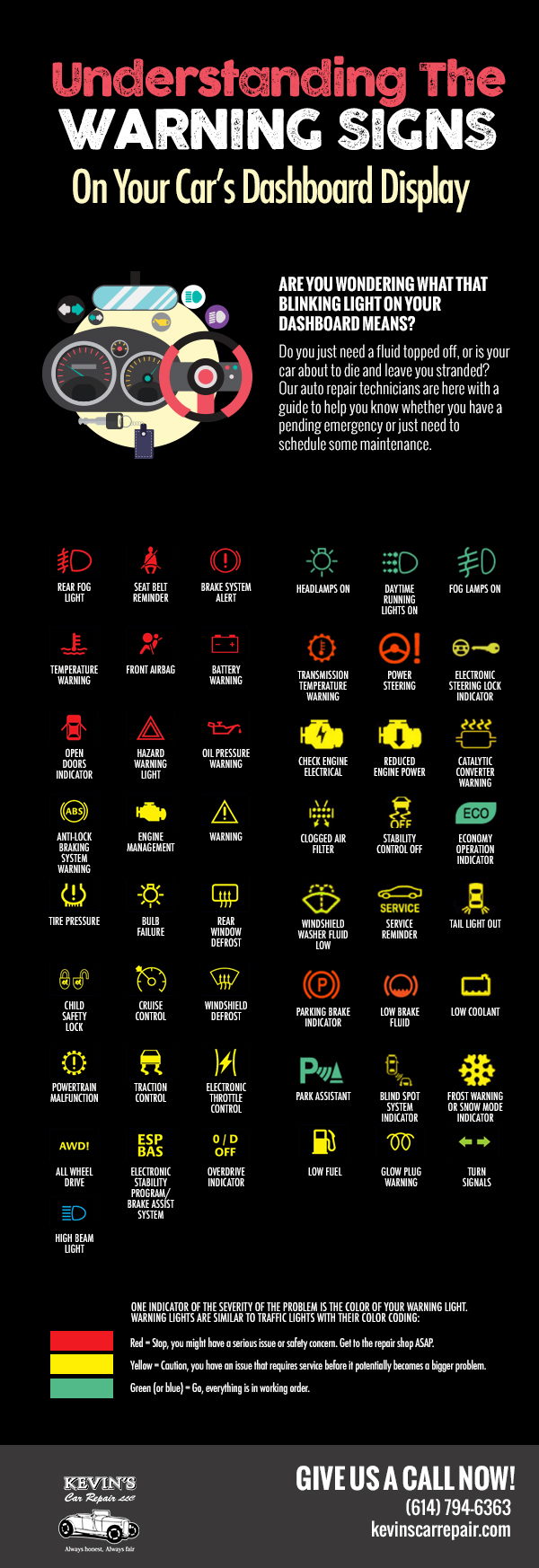Curious About Those Control Panel Warning Lights In Your Cars And Truck? Figure Out What They Mean For Your Automobile'S Health And Wellness
Curious About Those Control Panel Warning Lights In Your Cars And Truck? Figure Out What They Mean For Your Automobile'S Health And Wellness
Blog Article
Article Author-Justesen Crawford
When you're behind the wheel, those radiant warning lights on your dashboard can be a bit perplexing. Do you understand what they're trying to inform you regarding your auto's wellness? Understanding the value of these lights is crucial for your security and the long life of your vehicle. So, https://brake-check28406.blog-kids.com/30409781/examine-the-dynamic-changes-in-vehicle-maintenance-practices-during-the-electrification-period of those lights turns up, would not you intend to understand its message properly and take the needed actions to resolve it?
Common Warning Lighting and Interpretations
Recognize common warning lights in your vehicle and recognize their definitions to guarantee safe driving.
One of the most common caution lights consist of the check engine light, which indicates issues with the engine or exhausts system. If this light comes on, it's critical to have your vehicle checked without delay.
The oil stress cautioning light indicates reduced oil pressure, calling for prompt focus to avoid engine damages.
please click the up coming website page blinking battery light may suggest a malfunctioning billing system, potentially leaving you stranded if not dealt with.
The tire pressure monitoring system (TPMS) light notifies you to low tire pressure, affecting car stability and fuel performance. Ignoring please click the up coming document could bring about unsafe driving conditions.
The ABS light suggests an issue with the anti-lock braking system, compromising your capability to quit swiftly in emergency situations.
Finally, the coolant temperature advising light warns of engine overheating, which can cause serious damage otherwise resolved swiftly.
Recognizing these common warning lights will certainly help you attend to problems without delay and maintain risk-free driving problems.
Relevance of Prompt Interest
Comprehending the typical warning lights in your vehicle is only the primary step; the significance of immediately addressing these warnings can't be emphasized enough to ensure your security on the road.
When a warning light brightens on your control panel, it's your automobile's way of connecting a possible issue that needs focus. Overlooking these warnings can cause more extreme issues down the road, endangering your safety and security and potentially costing you more out of commission.
Trigger interest to advising lights can stop breakdowns and accidents. As an example, a blinking check engine light might show a misfire that, if left ignored, could cause damages to the catalytic converter. Addressing this immediately can conserve you from an expensive repair service.
In a similar way, a brake system cautioning light could indicate reduced brake liquid or worn brake pads, critical parts for your safety when driving.
Do It Yourself Troubleshooting Tips
If you discover a caution light on your dashboard, there are a couple of DIY fixing ideas you can attempt prior to seeking professional assistance.
The primary step is to consult your auto's manual to understand what the specific caution light suggests. Occasionally the problem can be as simple as a loose gas cap setting off the check engine light. Tightening the gas cap may resolve the problem.
Another usual issue is a low battery, which can trigger different cautioning lights. Inspecting the battery links for deterioration and ensuring they're safe and secure may deal with the trouble.
If a warning light continues, you can try resetting it by disconnecting the auto's battery for a couple of minutes and after that reconnecting it. Furthermore, checking your automobile's liquid degrees, such as oil, coolant, and brake fluid, can help fix cautioning lights connected to these systems.
Conclusion
In conclusion, understanding your automobile's warning lights is essential for keeping your car running smoothly and securely. By without delay addressing these signals and knowing what they mean, you can prevent costly repairs and possible breakdowns.
Remember to consult your vehicle's manual for particular details on each alerting light and do something about it appropriately to guarantee a trouble-free driving experience.
Keep informed, remain safe when driving!
